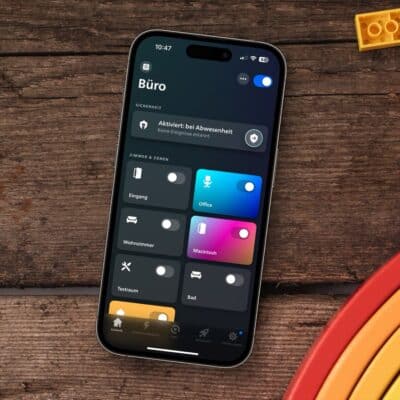I already explained a few days ago what a small inconspicuous switch can do: as soon as the Smart Button is coupled with a Hue Bridge, some third-party products from Innr, for example the popular Smart Plug SP 120, will fail. But that’s by far not all – as the following comment from Hueblog reader Peter shows:
“I don’t have any Innr products in use, but I notice that after the integration of six Hue Buttons the whole Hue system becomes very unstable. This is mainly expressed by the fact that often no connection can be established between the Hue app and the Hue base”.
So I started looking for clues and I found them relatively quickly. The reason for the problems is the number of rules, sensors and schedules that the Hue Smart Button on the Hue Bridge requires.
This is how dimmer switch and Smart Button differ
For example, while a dimmer switch, which offers very similar functions, only occupies 10 rules, 1 sensor and 1 schedule, the Hue Smart Button occupies 18 rules, 5 sensors and 2 schedules. Before I explain to you what effects this has, I would first like to explain the technical background.
And this can be done relatively easily by a little comparison: while the dimmer switch puts all functions on four individual hardware buttons, the Smart Button has only one button for exactly the same functions (switch on, scene change, dimming and switch off). Equipped with less hardware, the software is therefore strained much more.
First of all, this has no noticeable effects at all – as long as you use a manageably large system. Finally, a year ago, the performance of the Hue Bridge was increased: it can now accommodate 250 rules instead of 200. Each of these rules can contain 8 conditions and 8 actions, and here the limits are again 1,000 conditions and 1,500 rules. Thereofore, it may happen that rules are used up even before their actual limit of 250.
And now it’s a simple arithmetic game: with the installation of six Hue Smart Buttons in the case of Hueblog reader Peter, 108 rules have been added, which alone makes for about 43 percent usage. In addition, there are also rules for existing accessory products such as Hue Tap, dimmer switches, Friends of Hue switches or motion sensors. You can find out with apps like iConnectHue or Bridge Inspector Hue about the utilization of the bridge.
In the end, the story leads us to a point that I have already mentioned several times in the past: Even though Signify was able to slightly improve the performance of the Hue Bridge a year ago, more and more users are reaching the limits of the system. So I think it’s even more important to either improve the software and increase the limits, or to launch an improved bridge right away where power users don’t have to worry about this aspect anymore.
Note: This article contains affiliate links. We receive a commission for purchases via these links, which we use to finance this blog. The purchase price remains unchanged for you.


























